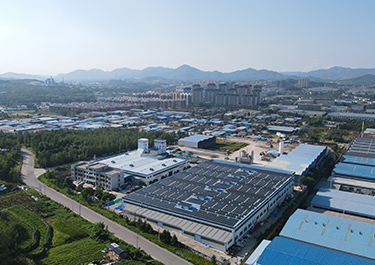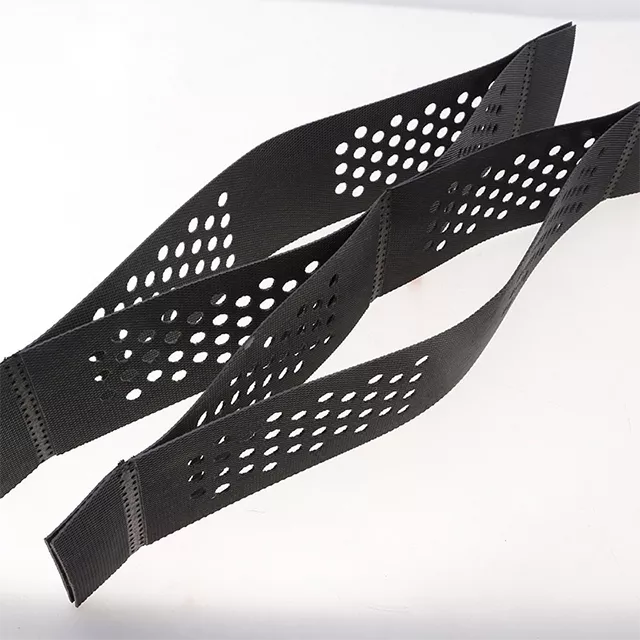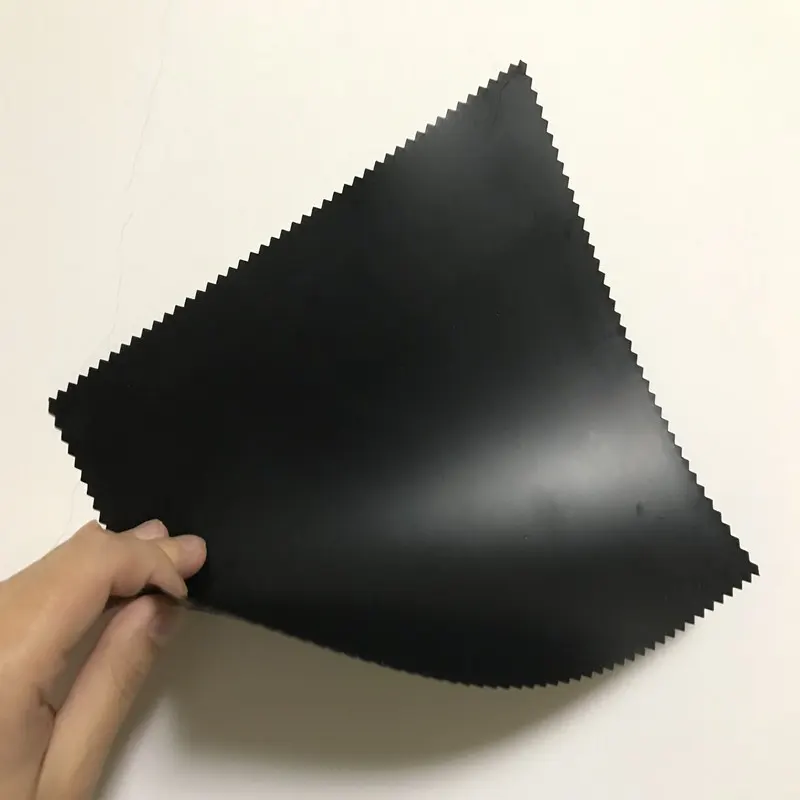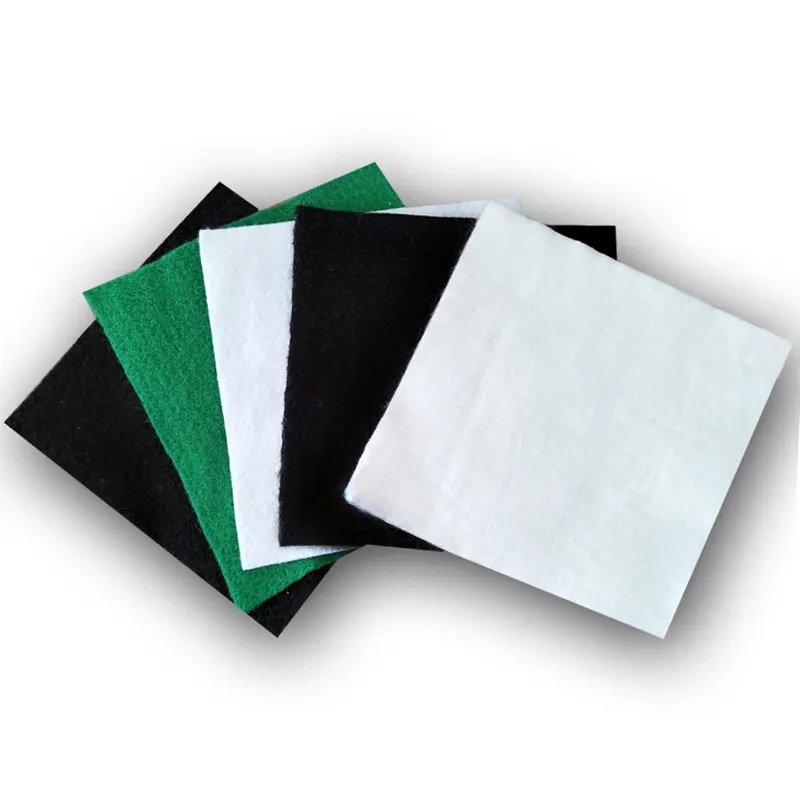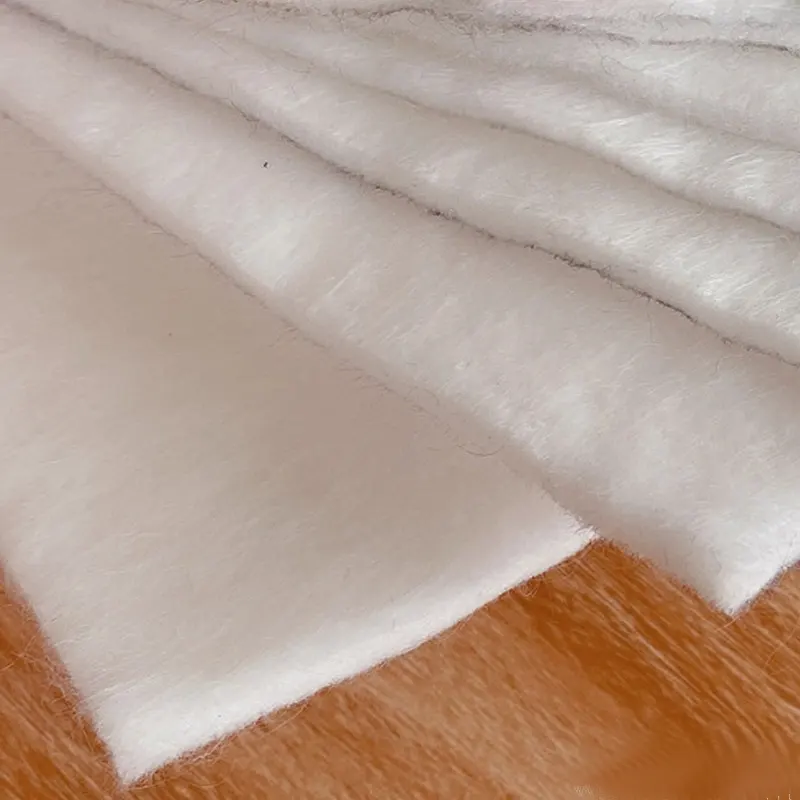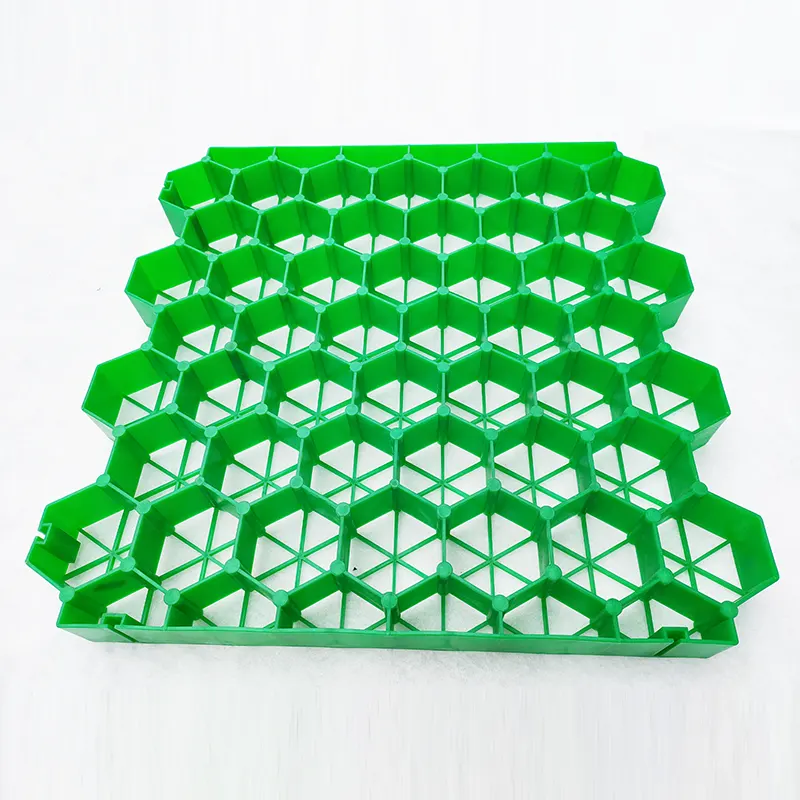Analysis of the Anti-Erosion Mechanism of Three-Dimensional Honeycomb Constraint System in Slope Protection
1. Application Background: What Causes Slope Erosion?
Slope erosion is a complex, dynamic process, the result of the combined effects of multiple natural and human factors. Simply put, it occurs when erosive forces (such as water and wind) overcome the slope's inherent resistance to erosion, leading to the loss and destruction of soil or rock. Slope erosion results from a balance between erosive forces (such as water, wind, and gravity) and the slope's resistance to erosion. Natural factors provide the background and energy for erosion, while human factors often act as catalysts, disrupting the natural balance and dramatically accelerating the erosion process. Therefore, the core principle of effective slope protection (such as the use of a three-dimensional honeycomb restraint system) is to enhance the slope's inherent resistance to erosion through engineering and biological means, while effectively mitigating the destructive effects of erosive forces.
2. System Overview: What is a three-dimensional honeycomb restraint system?
The so-called three-dimensional honeycomb restraint system is a common geocell. It is a three-dimensional honeycomb grid structure made of high-molecular polymers (such as HDPE and PP) through a special process. When unfolded, it forms a continuous "cell." When filled with soil, gravel, or a vegetation matrix, it works synergistically with the slope soil, achieving erosion resistance through multiple dimensions, including physical interception, hydrological regulation, mechanical reinforcement, and soil improvement. In slope protection applications, the workflow is typically as follows:
- 2.1. Slope Preparation: Level and compact the slope surface.
- 2.2. Laying the Honeycomb Cells: Unfold the folded honeycomb cells and anchor them to the top and slope surface.
- 2.3. Filling: Fill the honeycomb cells with soil, gravel, planting soil, or concrete.
- 2.4. Vegetation Establishment (if applicable): Sow seeds or lay turf on the planted soil.
The system's erosion resistance is not the result of a single factor, but rather the synergistic effect of mechanical reinforcement, hydrological regulation, and ecological restoration.
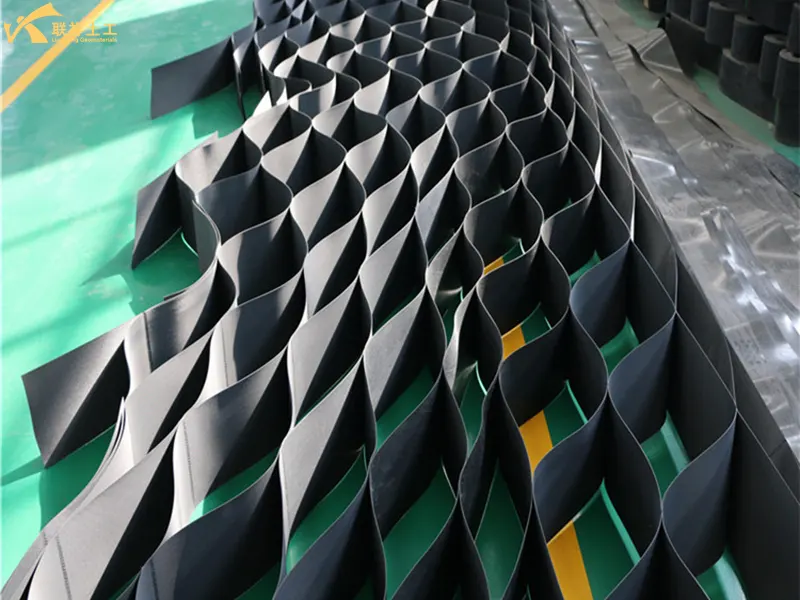
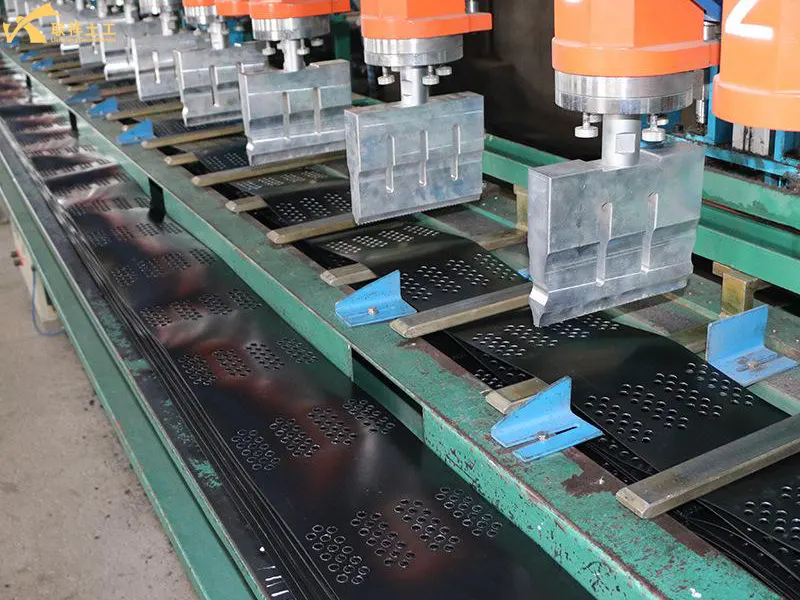
3. Analysis of Core Anti-Erosion Mechanisms
The primary external forces of erosion are water flow and wind. The three-dimensional honeycomb system resists these forces through the following mechanisms:
3.1. Mechanical Constraints and Surface Reinforcement Mechanism (Core Physical Protection)
The essence of slope surface erosion is the stripping and transport of soil particles by water (or wind). The honeycomb structure of the geocell directly blocks this process through "spatial confinement," providing the foundation for erosion resistance.
3.1.1. The Constraint Effect of the Cell's "Microcontainer"
The individual cells formed by the expanded geocell (typically 10-50 cm in size and 5-20 cm in height) divide the slope's surface soil into countless "microblocks." Soil particles within each cell are laterally constrained by the cell walls (2-5 mm thick and possessing a certain degree of rigidity), preventing them from moving freely.
- In the case of hydraulic erosion, even if rainwater forms surface runoff, the cell walls prevent direct erosion of the soil within, preventing fine particles (clay and silt) from being carried away.
- In the case of wind erosion (on slopes in arid areas), the cells reduce wind speed, reducing erosion of the surface soil by airflow while also preventing the wind from migrating loose particles.
3.1.2. Interception and Sedimentation Effects
When small amounts of soil particles are carried out of a cell by runoff, the walls of adjacent cells intercept them, trapping them within the cell and preventing the formation of "scour gullies" (a typical initial stage of slope erosion). This "interception-sedimentation" cycle gradually repairs the surface soil and maintains the integrity of the slope surface.
- Three-dimensional confinement effect: The honeycomb structure divides and constrains the originally loose fill material into individual "cells." This three-dimensional confinement significantly enhances the fill's integrity and shear strength, enabling it to withstand the shear forces of water flow and wind.
- Stress Dispersion: When water impacts the slope, the impact force is dispersed throughout the affected area by the honeycomb structure, rather than being concentrated at a single point. This prevents the "scouring" and "gullying" of the slope caused by concentrated water flow.
- Forming a Flexible Protective Layer: When combined with the fill, the system forms a high-strength, flexible, integral protective shell on the slope. This shell adheres tightly to the slope surface, maintaining its integrity even in the event of uneven settlement, unlike rigid protective materials such as concrete, which are prone to cracking and failure.
3.2. Hydrological Regulation and Runoff Control Mechanism (Reducing Erosion Forces)
Rainwater erosion is the primary driver of slope hydraulic erosion, and its destructive power is positively correlated with surface runoff velocity and total runoff volume. Geocells mitigate the erosive force of water flow at its source by modifying the slope's hydrological processes.
3.2.1. Slowing Surface Runoff
The three-dimensional structure of geocells increases the surface roughness (the roughness coefficient n increases from 0.015-0.025 for bare soil to 0.03-0.05):
- Reducing surface runoff velocity: The sidewalls of the honeycomb structure form countless tiny "water retaining weirs," significantly increasing the surface roughness. As water flows through, resistance increases significantly, and flow velocity decreases dramatically. Runoff must flow around the cell walls, extending and obstructing the path, reducing flow velocity by 30%-60%.
- With reduced flow velocity, the "shear force" of the water flow (the key force that separates soil particles) is significantly reduced. When flow velocity is below 0.5 m/s, most soil particles (especially sand particles with a diameter greater than 0.05 mm) are prevented from being separated.
3.2.2. Increase Soil Infiltration and Reduce Runoff
After filling the geocells with soil, the cell walls support the soil structure, preventing soil compaction from rainwater and maintaining soil porosity (porosity can be increased by 10%-15%).
- Water Storage: Each cell acts as a miniature reservoir, temporarily storing rainwater.
- Prolonging Infiltration Time: Reduced flow velocity means water remains on the slope longer, providing ample time for rainwater to infiltrate.
- Reducing Runoff: More water infiltrates into the soil, directly reducing the amount of water that contributes to erosive runoff. According to fluid mechanics, the shear force of water flow is proportional to the square of the flow velocity. Therefore, reducing flow velocity is one of the most effective means of controlling erosion.
3.3. Ecological Synergy and Root Anchorage Mechanism (Long-Term Stability and Self-Repair)
Geocells are often used in conjunction with vegetation (herbs, shrubs), forming a "cell + vegetation" composite protection system. The synergistic effect of these two significantly enhances long-term erosion resistance, which is the core principle of ecological slope protection.
3.3.1. Vegetation Directly Intercepts Water Flow
- The stems and leaves of vegetation can buffer the impact of rainwater (reducing splash erosion on the soil by 60%-90%). Furthermore, the barrier effect of the stems and leaves further slows runoff velocity, synergizing with the hydrological regulation effect of the cells.
3.3.2. Mechanical Complementarity between Roots and Cells
Vegetation roots (especially deep-rooted shrubs) can penetrate deep into the slope's soil, while the cells primarily constrain the surface soil. Together, they form a "surface-deep" three-dimensional reinforcement:
- Root Reinforcement and Anchoring: The well-developed root systems of plants penetrate the honeycomb cells, forming a "soil-cell-root" composite reinforcement with the cells and filler. The roots act as natural anchors, anchoring the surface soil to the more stable deeper soil, significantly enhancing the shallow stability of the slope.
- Surface: The cells stabilize the soil, providing a stable environment for root germination;
- Deep: The roots anchor the deeper soil, preventing the cell-surface soil from collapsing and thus preventing "mass erosion."
3.3.3. Improving Soil Fertility and Maintaining the Ecological Cycle
- Dead branches and leaves from vegetation can be converted into organic matter, increasing soil fertility, promoting microbial activity, and further improving soil structure (e.g., increasing aggregate structure and enhancing soil water and fertilizer retention). This creates a virtuous cycle of "protection-ecology-soil improvement," maintaining the slope's erosion resistance over the long term.
- Ideal Plant Growth Environment: The honeycomb structure provides a stable growth base for plants, preventing seeds and seedlings from being washed away by water. Its water and fertilizer retention properties also promote plant growth.
- Ecological Self-Resilience: The lush vegetation canopy intercepts rainfall, reducing the impact of raindrops on the ground surface; the leaf litter further protects the ground surface. This gives the protection system a dynamic, self-sustaining erosion resistance, which increases with vegetation growth.
3.4. Wind Erosion Resistance Mechanism
Wind erosion is also a major problem for slopes in arid areas.
- Surface Fixation: The system secures surface particles within the cells to prevent them from being blown away by the wind.
- Changing the wind field structure: The honeycomb structure disrupts the surface wind field, creating turbulence and reducing near-surface wind speed, thereby weakening the wind's ability to transport sediment and erode.
3.5. Mechanical Reinforcement and Soil Improvement - Improving Slope Anti-Slide Stability
Slope erosion not only results in the loss of surface particles but can also trigger deeper soil collapse (gravity erosion). Geocells form a "composite soil mass" with the soil, mechanically enhancing the overall stability of the slope and resisting deeper erosion.
3.5.1. Enhanced Soil Shear Strength
The geocell grid structure has high tensile stiffness (for example, HDPE cells have a tensile strength of 10-20 kN/m), which provides lateral restraint for the fill soil:
- When the slope soil tends to slide, the cell walls prevent lateral displacement of the soil, increasing the normal stress between soil particles and thereby improving the soil's shear strength (shear strength can increase by 30%-80%).
- The friction between the cell and the soil (interfacial friction coefficient is approximately 0.3-0.5) further transfers stress, distributing local loads over a wider area and preventing local soil damage due to stress concentration.
3.5.2. Improving Soil Structure and Enhancing Cohesion
Over long-term use, geocells can inhibit soil shrinkage and expansion due to drying and wetting cycles, as well as damage due to freeze-thaw cycles:
- The cells constrain the soil, preventing cracks from forming due to drying and shrinkage. (Cracks act as pathways for rainwater infiltration, potentially leading to deep erosion.)
- When combined with vegetation, plant roots can penetrate the cells and intertwine with the soil, forming a three-dimensional, stable "root-cell-soil" structure. The tensile strength of the roots (for example, herbaceous roots have a tensile strength of approximately 10-30 MPa) further enhances soil cohesion and prevents deep soil collapse.
4. Synergy Between Mechanisms: 1+1 > 2 Anti-Erosion Effects
The four aforementioned mechanisms do not exist in isolation; rather, they reinforce and enhance each other:
- The three-dimensional confinement effect provides a foundation for soil improvement and vegetation growth (a stable structural environment);
- Improved soil physical and chemical properties provide nutrients for vegetation growth while enhancing soil shear strength, supplementing the confinement effect;
- Hydrodynamic optimization reduces runoff impact on cells and vegetation, protecting structural integrity;
- Vegetation growth further enhances soil erosion resistance and cell stability, compensating for the long-term shortcomings of simple structural protection (such as cell aging).
5. Comparison with Traditional Protection Measures
To better understand the advantages of this mechanism, it can be compared with two traditional methods:
| Protection Method | Anti-Erosion Mechanism | Disadvantages |
| Rigid Protection (e.g., shotcrete, masonry) | Relies on the inherent strength and weight of the structure to resist erosion. | Ecologically Unfriendly: Isolates water and soil exchange, damaging the ecosystem. Failure-prone: Deformation of the foundation makes the overall structure vulnerable to damage, making repair difficult. Poor landscape effects. |
| Simple Vegetation Protection | Relies on the effects of plant roots and canopies. | Initial Fragility: Vegetation is easily eroded before it matures. Limited Resistance to Heavy Rainfall: May fail on steep slopes or under high-intensity water flow. |
| 3D Honeycomb Constraint System + Vegetation | Synergistic Effects of Mechanical Reinforcement + Hydrological Regulation + Ecological Restoration. | Advantages: Overcomes the initial fragility of simple vegetation, combining the immediate effectiveness of rigid protection with the long-term ecological benefits of vegetation protection, creating a flexible, durable, and eco-friendly protection system. |
6. Application Case Studies
Geocells (10 cm high, 20 cm side length) combined with herbaceous plants such as Bermudagrass and alfalfa are widely used in highway and railway slope protection:
- After geocells were laid on a highway slope (gradient 1:1.5, sandy loam soil), after three years of heavy rain observation, no obvious scour gullies were observed on the slope, the vegetation coverage rate remained above 90%, and the soil erosion modulus (a measure of erosion intensity) dropped from 5,000 t/(km²·a) on the bare slope to below 500 t/(km²·a), demonstrating significant anti-erosion effectiveness.
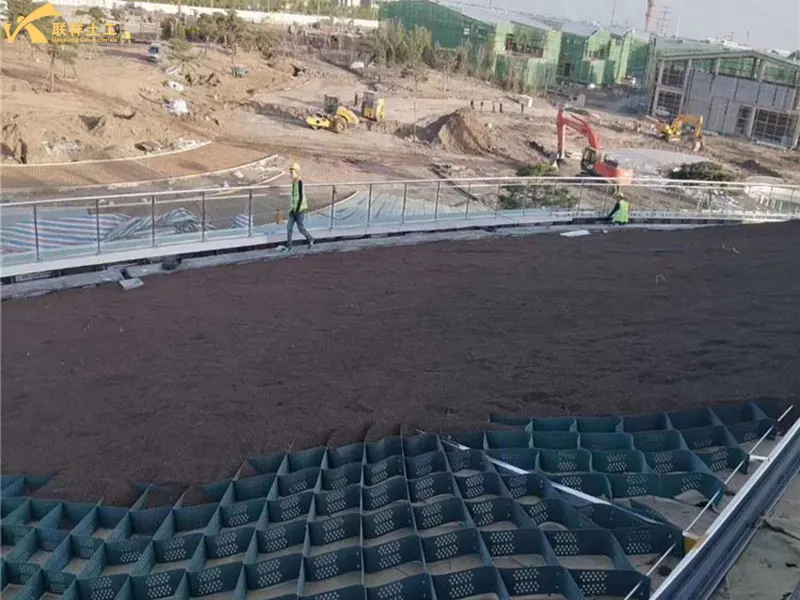
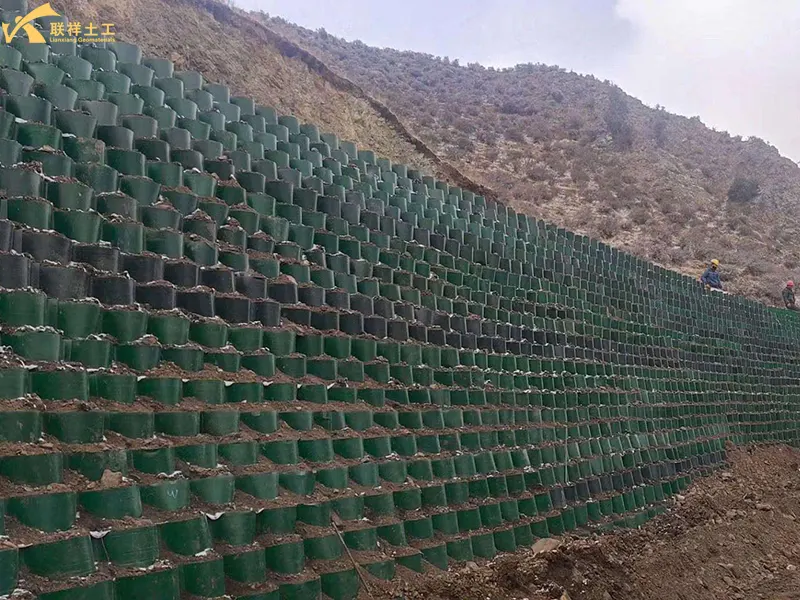
7. Conclusion
The anti-erosion mechanism of the three-dimensional honeycomb constraint system is a multi-layered, synergistic composite mechanism:
- 7.1. Macromechanical Level: Through three-dimensional constraints and surface reinforcement, a high-strength, flexible protective layer is formed, directly resisting the shearing effects of erosive forces.
- 7.2. Meso-Hydrological Level: By increasing roughness, reducing flow velocity, and promoting infiltration, the system effectively weakens surface runoff, the driving force of erosion, from a hydrodynamic perspective.
- 7.3. Micro-Ecological Level: By providing a stable foundation for vegetation, it promotes plant growth and leverages root anchoring to achieve long-term, self-reinforcing stability and protection.
Thus, this system not only passively "resists" erosion but also actively "manages" the hydrological and mechanical processes that cause erosion, thereby achieving highly effective, long-lasting, and environmentally friendly slope protection. In practical engineering, its excellent erosion resistance has been widely applied and verified in river bank protection, highway slopes, and mine remediation.
In summary, the geocell (a three-dimensional honeycomb confinement system) achieves "active defense and passive protection" against slope erosion through a multi-dimensional mechanism of "physical confinement to block erosion, soil improvement to enhance resistance, hydrodynamic regulation to reduce driving forces, and vegetation to collaboratively build a long-term system." It is an efficient, economical, and ecological slope protection technology.
Written by
SHANDONG LIANXIANG ENGINEERING MATERIALS CO., LTD.
Editor Fan
WhatsApp:+86 139 5480 7766
Email:admin@lianxiangcn.com
Contact
-
WhatsApp
-
E-MailE-Mail:admin@lianxiangcn.com
-
WeChatWeChat:18554180188

